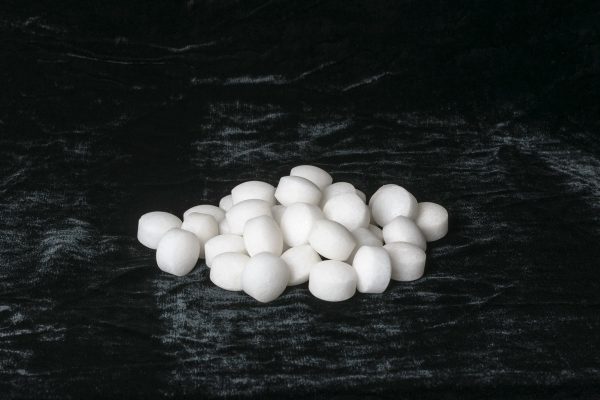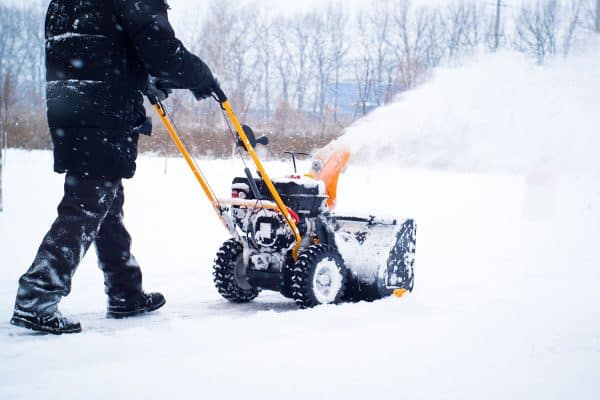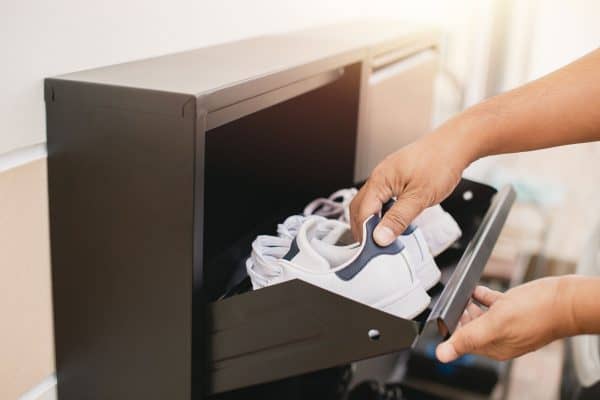Are you wondering if you can buy gasoline when the prices are low and then store it long-term for when gasoline prices go up? You’ve come to the right place, for we have researched this question, and we have the answer for you.
Gasoline has a very short shelf life—usually only a month or two outside the pump. Thus, on its own, it is not possible to store gasoline long-term.
However, there are ways to store gasoline longer than its normal shelf life. Learn all about it in the succeeding sections. Read on!
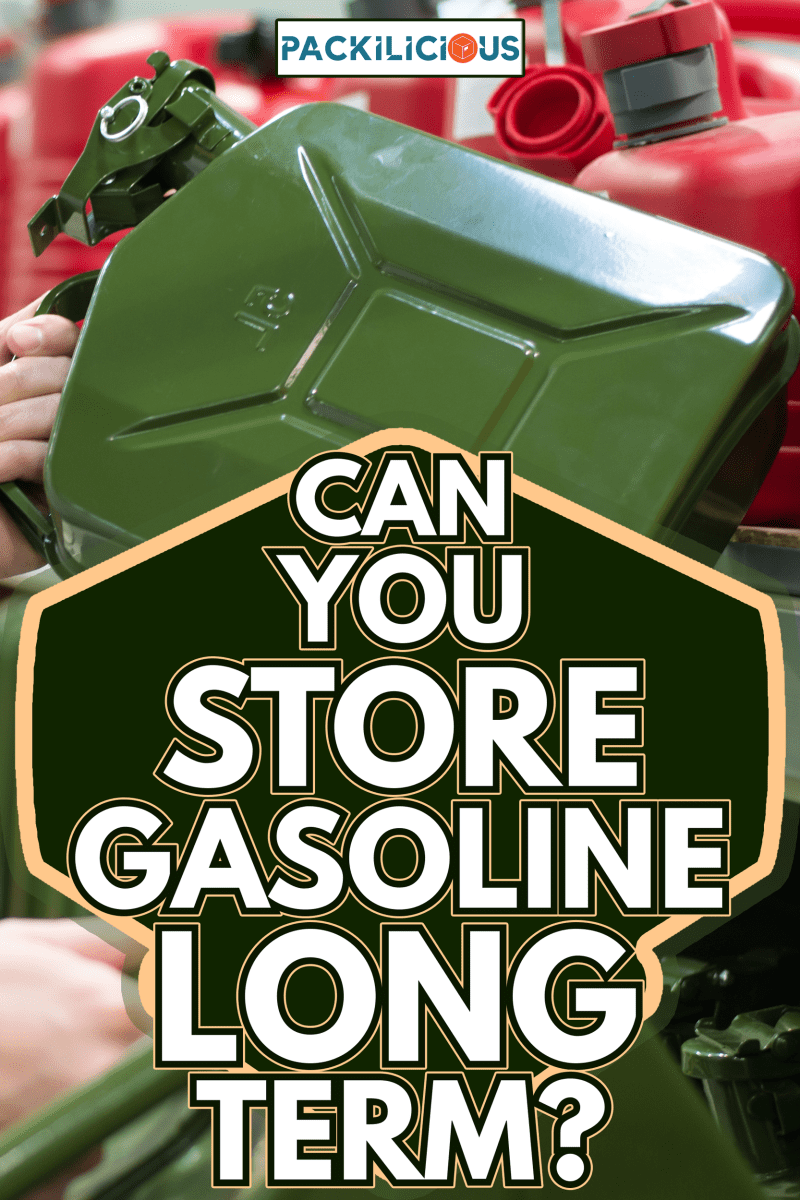
How to store gasoline long-term?
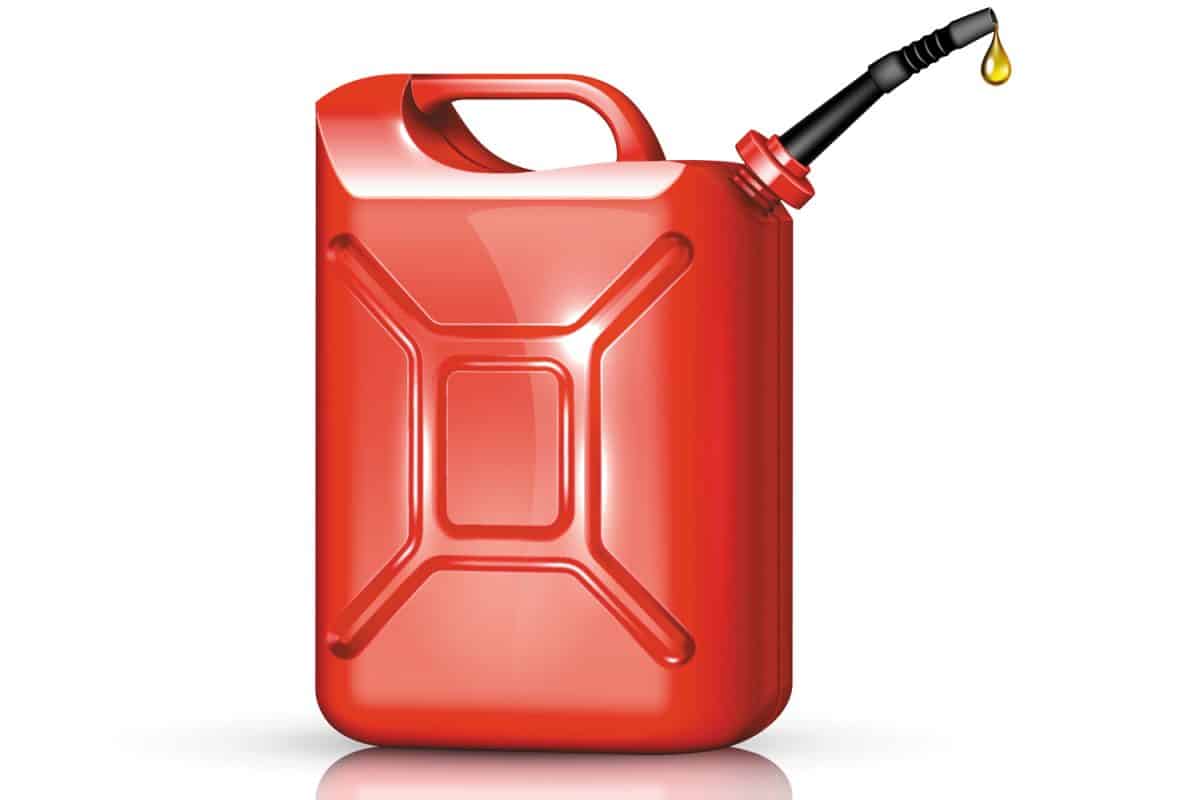
Gasoline is not made to be stored for a long time.
Have you ever seen the wavy fumes from the opening of your fuel tank whenever you’re loading gasoline into your vehicle? Gasoline starts to evaporate as soon as it comes into contact with air.
The fumes that you see are the energy-rich hydrocarbons that provide your car with most of the energy it needs to run. Hydrocarbons evaporate non-stop as soon as it leaves the pump in the gasoline station.
And once most of the energy-rich hydrocarbons have gone, what’s left are the components of your gasoline that are not effective as fuel.
What is gasoline made of?
To develop a way to store gasoline long-term, we need to understand what it is made of. Knowing the components of gasoline that go bad is the first step in preventing it from going bad in just a month.
Gasoline is composed of hundreds of different chemicals. Each of the different chemicals in gasoline performs a different function—from keeping your engine clean to how the gasoline performs once it explodes and burns inside your car.
A gasoline’s main source of combustion power is its hydrocarbons. Unfortunately, hydrocarbons are also extremely volatile and evaporate at a high rate as the gasoline ages.
Gasoline is carefully formulated so that the chemicals that do non-combustion-related tasks will be burned off by the hydrocarbons during combustion inside your car. If too many of the hydrocarbons have evaporated, what remains of your gasoline might no longer completely burn inside your engine and leave residues.
Residues inside your engine can cause performance issues and possibly damage your fuel injectors by clogging them.
Additionally, most gasoline in the US is mixed with ethanol. Ethanol extracts water from the air and mixes the water with gasoline.
How to properly store gasoline?
Proper storage of gasoline involves not storing it inside your home.
Gasoline inside your home is a serious fire risk. Additionally, gasoline inside your home is also a health risk. Exposure to gasoline fumes has been established as a source of certain health problems.
How to choose the right location for gasoline storage?
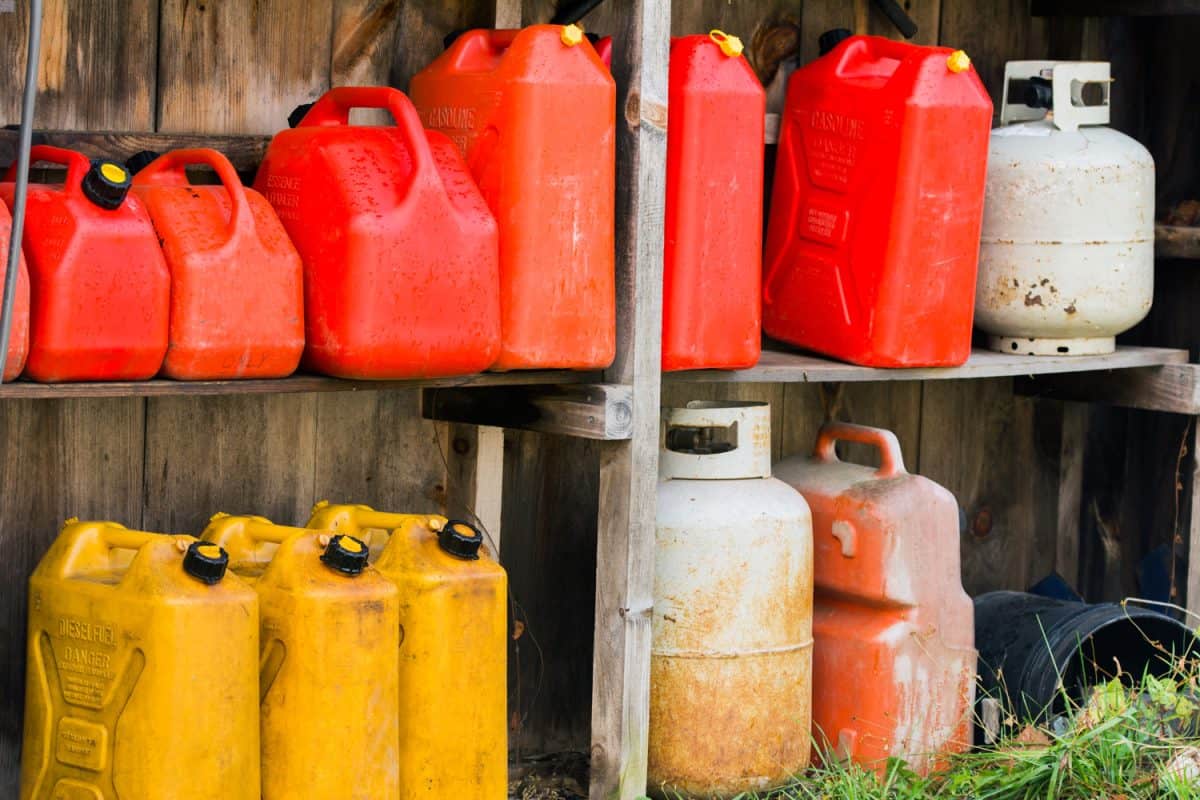
If you plan to store gasoline long-term, store it inside a separate outdoor structure like a storage barn, a tool shed, or a garage that is not connected to your house.
The ideal place to store your gasoline is a place that has an average temperature that does not go hotter than 80 degrees. Store it in a place that does not get exposed to the sun.
The location should also be at least 50 feet away from any source of heat, fire, or ignition. Have a fire extinguisher always at the ready near your storage location.
Which containers can be used to store gasoline?
Gasoline containers should be approved for use in storing gasoline. These are commonly available in home improvement stores and hardware stores.
Never store gasoline in glass jars or any container that can break. Never use any container that is not approved as a gasoline container.
It is important to use containers that have a capacity that is no bigger than five gallons.


Click here to see a gas can on Amazon.
How many blends of gasoline are there?
After talking about the container and where to store gasoline, the next thing you need to consider is the different gasoline blends or gasoline grades.
The gasoline that you get from gasoline stations is different during the winter and summer months. The trend of changing the gasoline blend during summer and winter started in 1995 that was established by the Clean Air Act Amendments of 1990.
Gasoline blends are shifted twice a year to match the effects of the season on engine exhausts and the capacity of engines to burn fuel.
What is RVP or Reid Vapor Pressure?
RVP is the vapor pressure of gasoline (and other petroleum products) that is measured at 100 degrees Fahrenheit. The original testing method was developed in 1930 and was revised many times.
The formulation of gasoline is changed during summer and winter to make gasoline more efficient during those seasons.
Gasoline cannot be pumped through the fuel line if there is gasoline vapor in the fuel line, which is common in summer. On the other hand, starting the car will be very difficult if liquid gasoline has not vaporized yet before it gets to the combustion chamber—a scenario common during the winter months.
Adjusting the RVP of gasoline during summer and winter allows gasoline to perform better during the months that the gasoline was formulated for. A higher RVP rating means that the fuel evaporates more easily than fuel with a lower RVP rating.
What is the winter blend of gasoline?
RVP standards are higher during the winter months. Winter-grade gasoline uses butane (with an RVP of 52 PSI) as an additive to increase the RVP of gasoline in winter.
Butane is abundant and inexpensive. Adding butane to gasoline contributes to lower gasoline prices during winter compared to summer prices.
Storage relevance of winter-blend gasoline
Gasoline during winter is more volatile than normal. This means that it evaporates easier and can be harder to store because it can go bad faster.
When storing winter-grade gasoline, it is important to tightly seal the container to minimize evaporation. Use only containers approved by Underwriters Laboratories or Factory Mutual.
Keep in mind that you can only use winter-grade gasoline during winter and that it will be dangerous to use during summer.
An RVP rating that is higher than 14.7 PSI (normal atmospheric pressure) can create high pressures inside the gasoline tank, causing gasoline to boil and evaporate.
What is the summer blend of gasoline?
Summer-grade gasoline is formulated to be more eco-friendly. The heat during summer produces an inversion layer that traps gaseous pollutants in the lower atmosphere. Thus summer-grade gasoline is made to have a lower RVP than normal atmospheric pressure.
The mandate of the EPA is an RVP of 9.0 PSI or only 7.8 PSI for summer-grade gasoline.
The lower RVP in summer-grade gasoline slows its evaporation. Slow evaporating gasoline addresses the release of VOCs or Volatile Organic Compounds that cause health issues and leads to smog formation.
Summer-grade gasoline is easier to store because its formula gives it slower evaporation. However, similar to winter-grade gasoline, gasoline made for summer is best used only for summer. An engine will have a difficult time starting in winter when you use summer-grade gasoline on it because of its low RVP rating.
What is RFG gasoline?
An RFG or Reformulated Gasoline is the third type of gasoline grade. RFG is required year-round in certain places in the US with stricter ozone regulations. RFG areas are not allowed to use summer or winter blends.
RFG gasoline is formulated to burn more cleanly than normal gasoline. It features a reduction in toxic pollutants in the exhaust. It is common in cities with existing high smog levels.
RFG gasoline is formulated for year-round usage. Thus, a stored RFG gasoline can be used at any time and can be an ideal emergency fuel—if that is the purpose of storing gasoline.
What are fuel stabilizers?
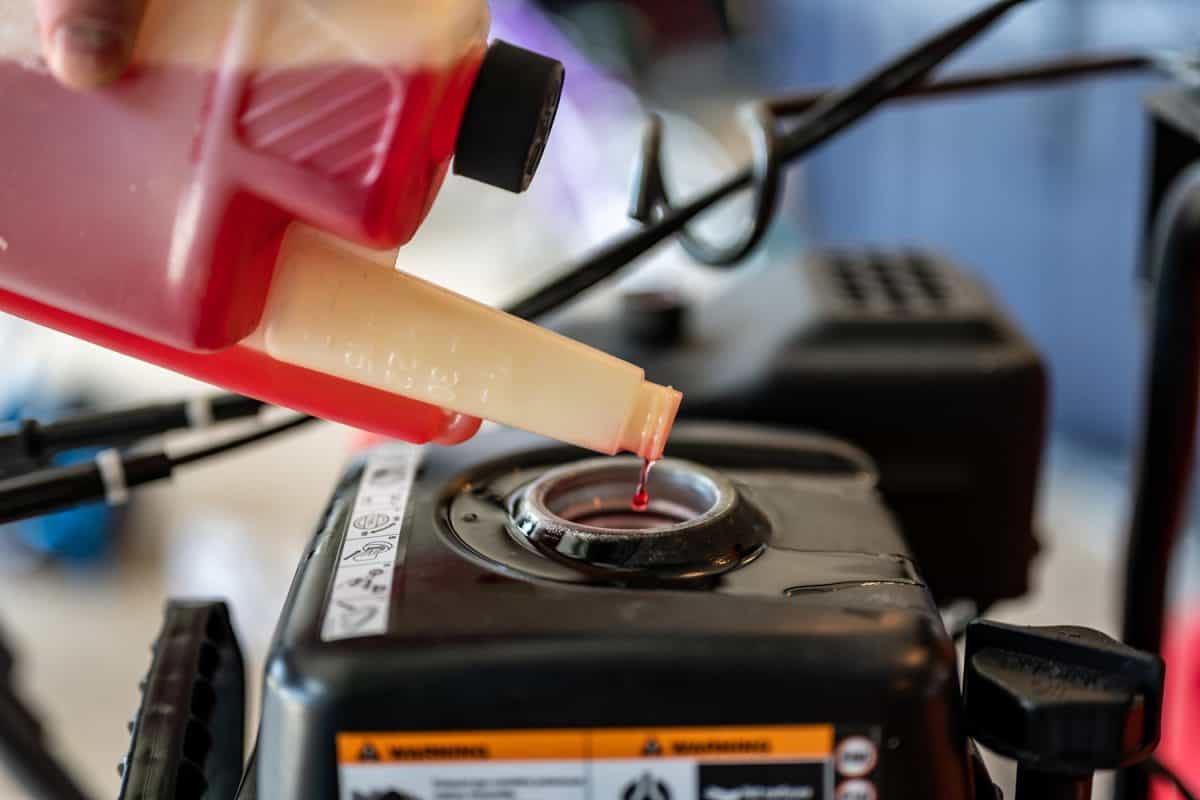
A fuel stabilizer is a petroleum-based solution that creates a thin protective layer for any fuel that is in storage. Fuel stabilizers also bond with gasoline hydrocarbons to prevent evaporation.
The reduced rate of evaporation also slows down the formation of residues like sticky resins that can clog your engine.
Chemically, fuel stabilizers include a mix of antioxidants that repel water. This prevents the alcohol in gasoline from absorbing water from the air.
Fuel stabilizers can extend the shelf life of gasoline from a couple of months to a couple of years, depending on the brand.


The STA-BIL Storage Fuel Stabilizer keeps fuel fresh for up to two years. It is proven effective for all gasoline including all ethanol-blended fuels. Check it out on Amazon through this link.
How to use a fuel stabilizer?
It is important to read the instructions on the label. The instructions will tell you how to mix the type of fuel stabilizer that you’ve bought with the amount of gasoline that you have.
It is also important to get the right fuel stabilizer for your purpose. Some fuel stabilizers are made to be spread into the fuel system of your car, while some are made for storing fuel in tanks.
Conclusion
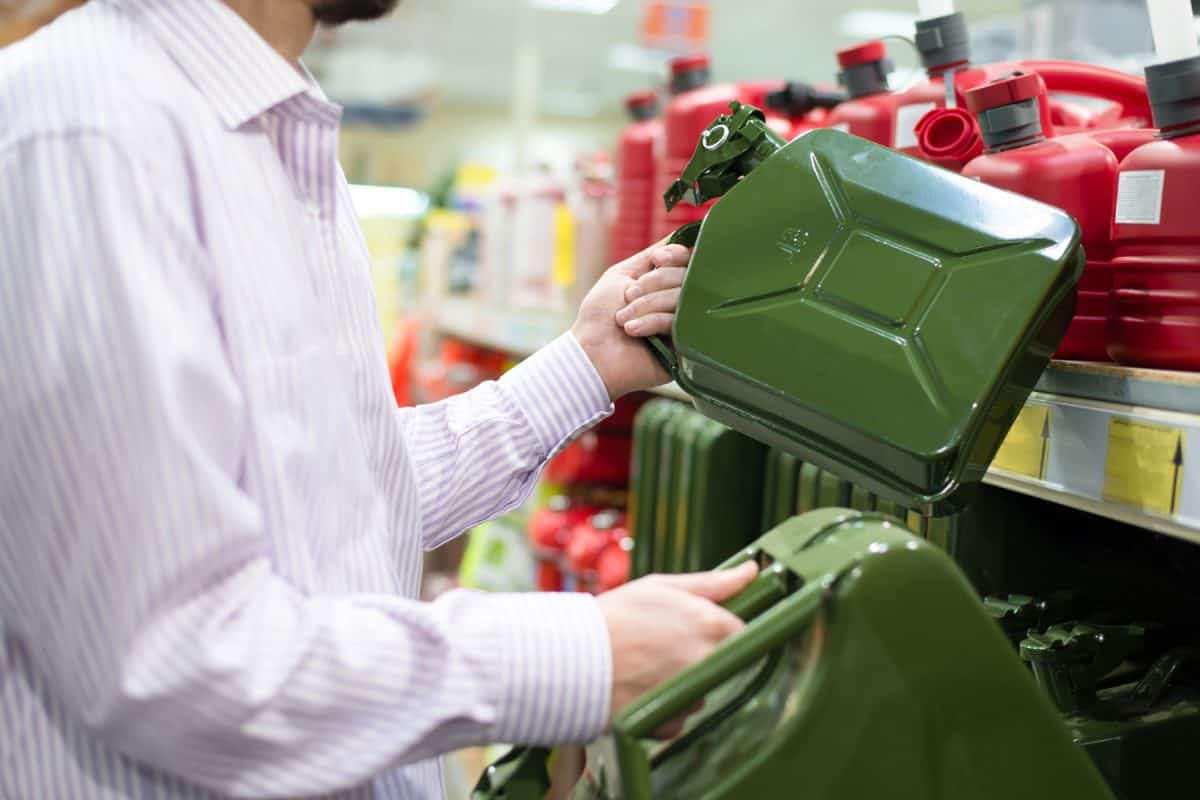
Gasoline in itself cannot be stored long term. Using the right container, storing it in the right place, and adding the right fuel stabilizer can lengthen the shelf life of gasoline. Knowing the gasoline blend is also important when storing gasoline.
If you enjoyed reading this article, you might find the articles below equally enjoyable to read:

